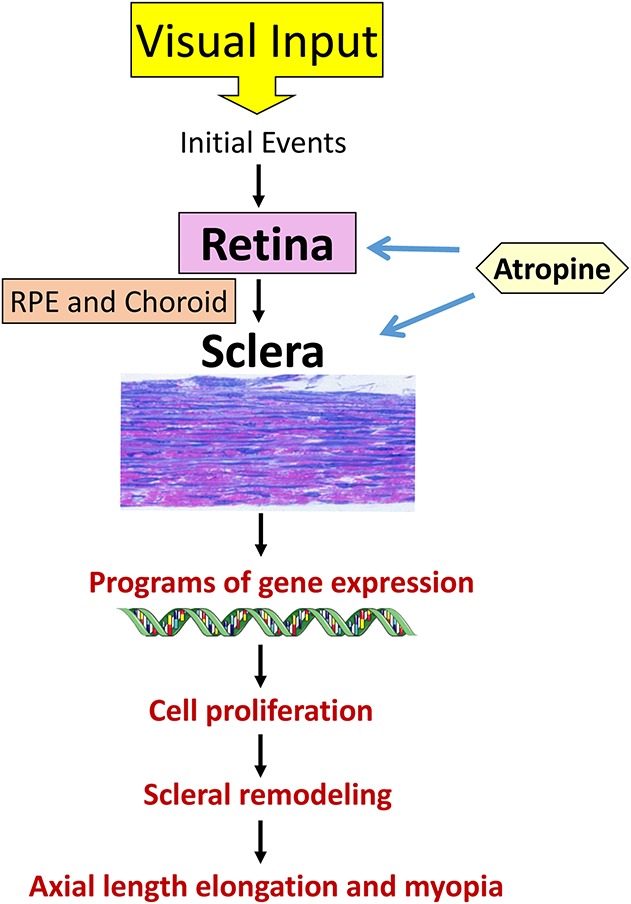FIG. 1.

Schematic representation of signal cascade mediating myopia development in animal models. The available evidence points to an interaction between the retina and sclera in the development of myopia. However, this is largely from animal model studies where visual cues such as optical defocus imposed by lens wear predominantly drive axial elongation. These visual inputs initiate certain molecular events in retina. The growth-regulatory signals are then relayed to the sclera through RPE and choroid to facilitate programs of gene expression, cell proliferation, and scleral remodeling, which subsequently lead to axial length elongation causing myopia. We have little idea as to the situation in humans, where genetic and environmental factors may also play a role in myopia induction and development. Moreover, we do not know the nature of intertissue communication that may be quite complex in humans and even change in different stages of myopia development. Atropine targets biological receptors in both the retina and sclera, to curtail myopia progression. RPE, retinal pigment epithelium.
